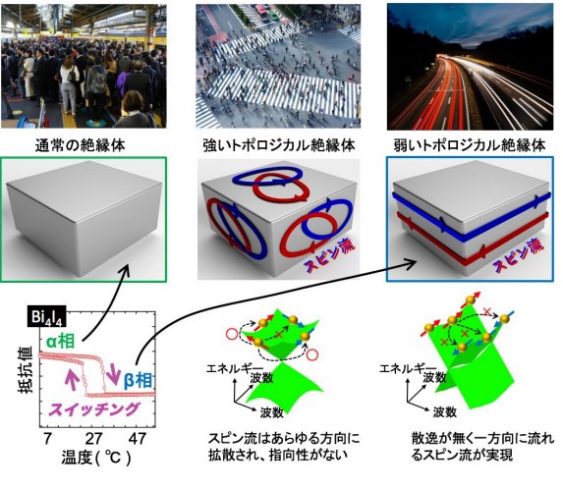Figure
Emergence and control of ultrafast, directional, dissipationless surface spin current
Abstract
The major breakthroughs in understanding of topological materials over the past decade were all triggered by the discovery of the Z2-type topological insulator—a type of material that is insulating in its interior but allows electron flow on its surface. In three dimensions, a topological insulator is classified as either ‘strong’ or ‘weak’, and experimental confirmations of the strong topological insulator rapidly followed theoretical predictions. By contrast, the weak topological insulator (WTI) has so far eluded experimental verification, because the topological surface states emerge only on particular side surfaces, which are typically undetectable in real three-dimensional crystals. Here we provide experimental evidence for the WTI state in a bismuth iodide, β-Bi4I4. Notably, the crystal has naturally cleavable top and side planes—stacked via van der Waals forces—which have long been desirable for the experimental realization of the WTI state. As a definitive signature of this state, we find a quasi-one-dimensional Dirac topological surface state at the side surface (the (100) plane), while the top surface (the (001) plane) is topologically dark with an absence of topological surface states. We also find that a crystal transition from the β-phase to the α-phase drives a topological phase transition from a nontrivial WTI to a normal insulator at roughly room temperature. The weak topological phase—viewed as quantum spin Hall insulators stacked three-dimensionally—will lay a foundation for technology that benefits from highly directional, dense spin currents that are protected against backscattering.

The article, “A weak topological insulator state in quasi-one-dimensional bismuth iodide,” was published in Nature at DOI: https://doi.org/10.1038/s41586-019-0927-7.
Related links











